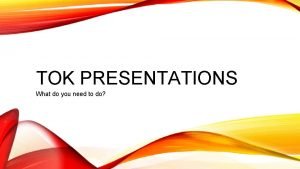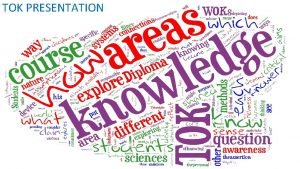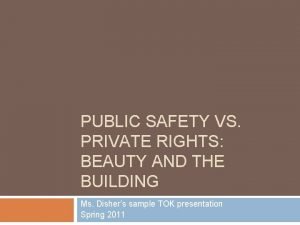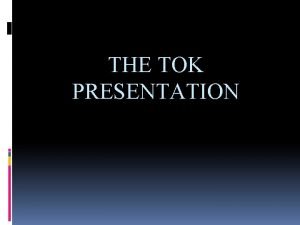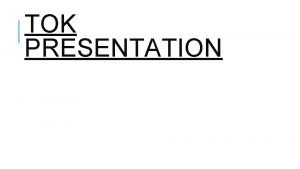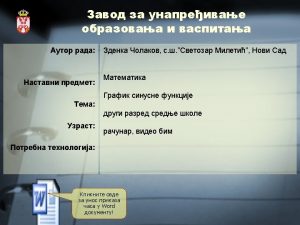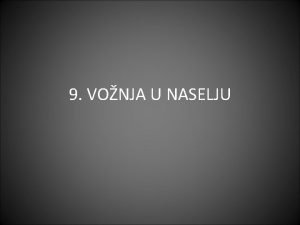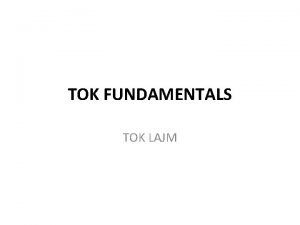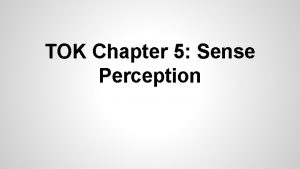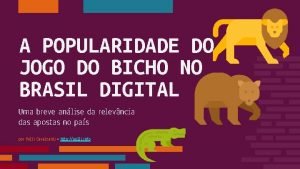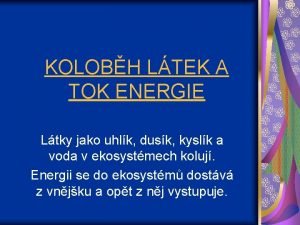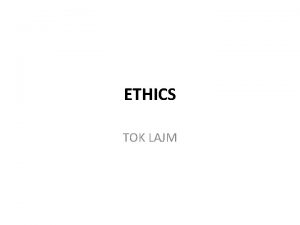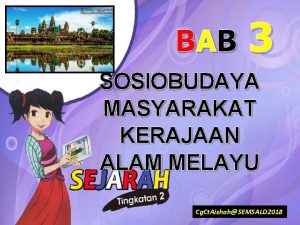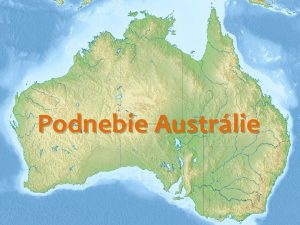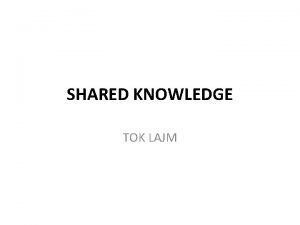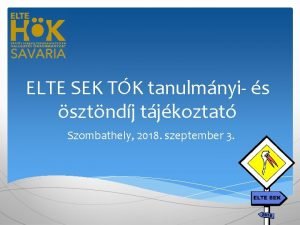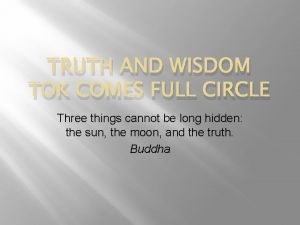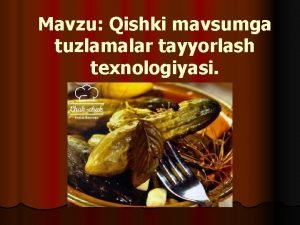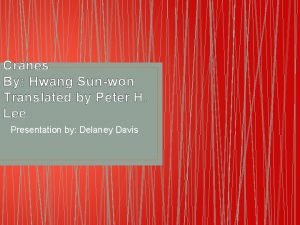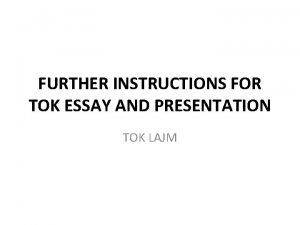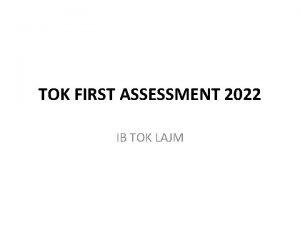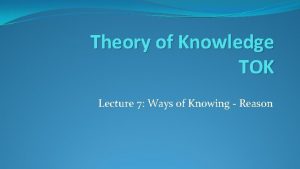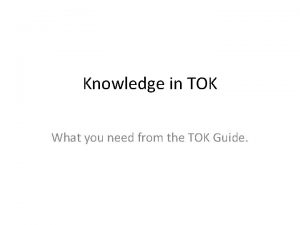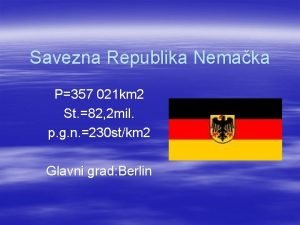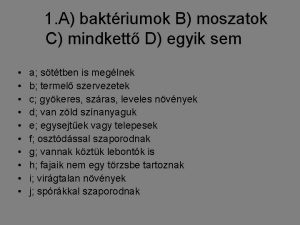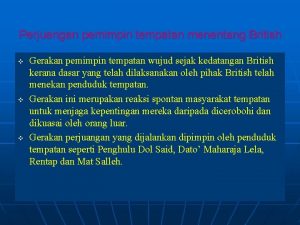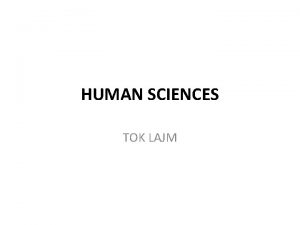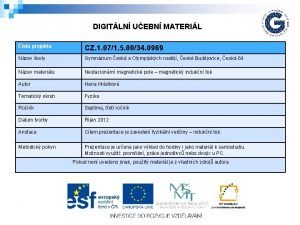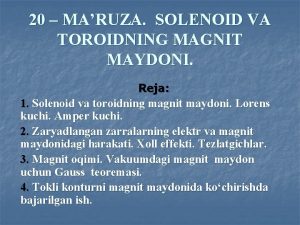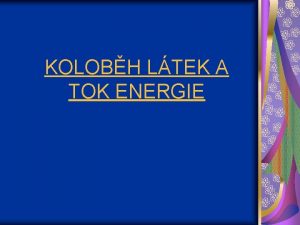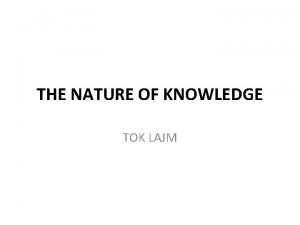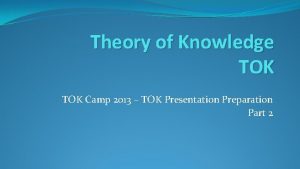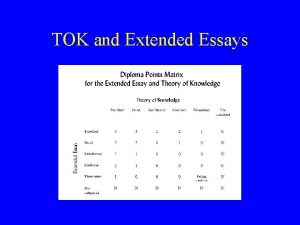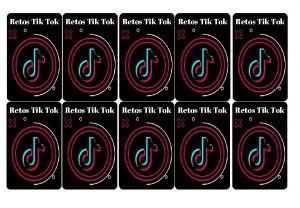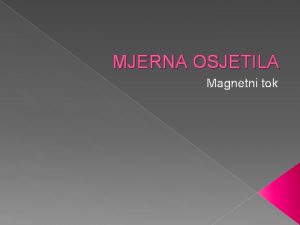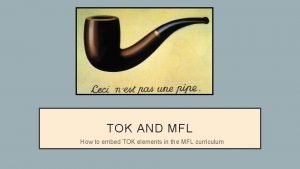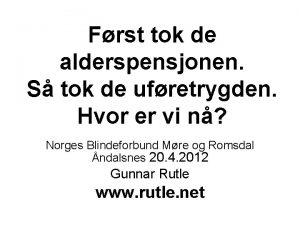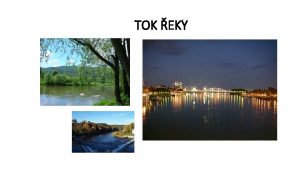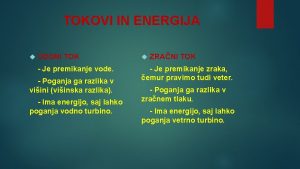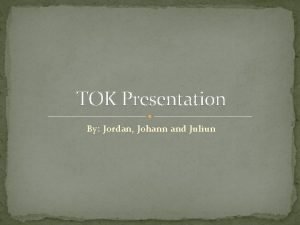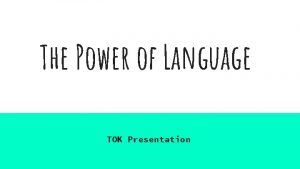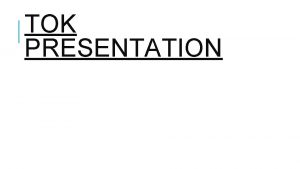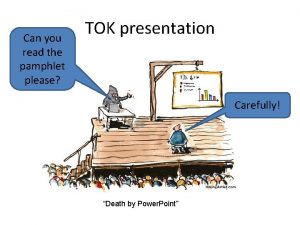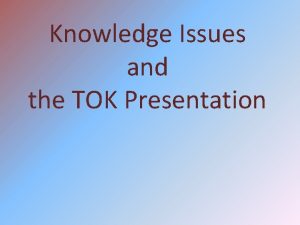THE TOK PRESENTATION The To K Presentation as






































- Slides: 38

THE TOK PRESENTATION

The To. K Presentation as a form of Assessment 1 What is the Presentation designed to do? 2 How is the Presentation Assessed? 3 How to go about doing the Presentation

1. What is the Presentation Designed to do? Consider the history of teaching / learning: Oral conversation as a form of discourse is considerably older than writing – Confucius, Buddha, Plato, Homer – bards Some teachers and pupils “feel” more comfortable talking and listening than reading and writing things down Why do scientists dislike writing essays so much, yet enjoy the opportunity to engage in intellectual discussion? Why is the concept of an “academic paper” only of a written essay that is read out loud?

1. What is the Presentation Designed to do? • The To. K Presentation is an opportunity for you to talk about a knowledge issue that is related closely to a real life situation that has personal relevance to you as the centre of your learning profile. • The IB To. K Guide states that: The emphasis in the TOK presentation is on demonstrating an understanding of knowledge at work in the world. This means that it is your chance to show that the sort of questions you have been asking in To. K can be asked of situations in the real world.

1. What is the Presentation Designed to do? In your Presentation, you should: a) Link clearly a real life situation/event with a Knowledge Issue b) Outline the real life situation / event briefly c) Explore the Knowledge Issue that comes from it in a general way and in terms of The Ways of Knowing – Perception, Language, Reason, Emotion The Areas of Knowledge – Arts, History, Mathematics, Human Science, Natural Science, Ethics d) Relate back to the original real life situation/event AND other real life situations / events

2. How is the Presentation Assessed? 10 minutes person and 4 Criteria: A: IDENTIFICATION OF KNOWLEDGE ISSUE B: TREATMENT OF KNOWLEDGE ISSUE C: KNOWER’S PERSPECTIVE D: CONNECTIONS

2. How is the Presentation Assessed? Criterion A: A: IDENTIFICATION OF KNOWLEDGE ISSUE WHAT YOU NEED TO DO: Did the presentation 1. Find a real life situation that has identify a relevant personal relevance knowledge issue 2. Extract from it a involved, implicit or embedded in a real- knowledge issue 3. Show clearly how life situation? the knowledge issue and the situation are related

2. How is the Presentation Assessed? What the criteria say: Criterion A: Identifying the Knowledge Issue

2. How is the Presentation Assessed? Criterion B: B: TREATMENT OF KNOWLEDGE ISSUES WHAT YOU NEED TO DO: Did the Presentation Show that you understand the knowledge issue – and show a good any other knowledge understanding of issues that arise during knowledge issues, in your exploration and development. the context of the real Show clear progression in -life situation? your thinking and logical approach. . cont’d

2. How is the Presentation Assessed? Criterion B: B: TREATMENT OF KNOWLEDGE ISSUES WHAT YOU NEED TO DO: Did the Presentation Ideas to explore are: show a good the influence of a knower’s attributes on their understanding of interpretation of a situation knowledge issues, in the context of the The role of relevant Wo. Ks in creating knowledge about real-life situation? the situation The methods used by different Ao. Ks in handling the situation

2. How is the Presentation Assessed? What the criteria say: Criterion B: Treatment of the Knowledge Issues

2. How is the Presentation Assessed? Criterion C: C: KNOWER’S PERSPECTIVE WHAT YOU NEED TO DO: Did the Presentation, Show, through your mastery particularly in the use of of the material you present, how the topic is significant arguments and to you as a knower. examples, show an individual approach and Think ahead and demonstrate ownership demonstrate the of the topic. significance of the . . cont’d topic?

2. How is the Presentation Assessed? Criterion C: C: KNOWER’S PERSPECTIVE WHAT YOU NEED TO DO: Construct your Did the Presentation, arguments from your particularly in the use own reflections NOT of arguments and those of others examples, show an Choose examples from individual approach your own experiences and demonstrate the wherever possible significance of the Demonstrate why your topic? audience should care

2. How is the Presentation Assessed? What the criteria say: Criterion C: Knower’s Perspective

2. How is the Presentation Assessed? Criterion D: Connections What you need to do: • Did the Presentation give Use the Ways of Knowing a balanced account of and Areas of Knowledge to how the topic could be approached from different explore other perspectives? • Did the Presentation show Consider their wider implications and how this how the positions taken on the various knowledge might lead to alternative issues would have approaches in other real life implications in related situations. areas? Quality not quantity. …cont’d

2. How is the Presentation Assessed? Criterion D: C: CONNECTIONS Did the Presentation give a balanced account of how the topic could be approached from different perspectives? Did the Presentation show the positions taken on the various knowledge issues would have implications in related areas? WHAT YOU NEED TO DO: Suggestions are: Look for different approaches to the KI not to the interpretation of the real life situation Consider whether different Wo. Ks and Ao. Ks lead to different approaches Try not to turn your presentation into a debate Show wider implications by linking to other real life situations

2. How is the Presentation Assessed? What the criteria say: Criterion D: Connections

3. How to go about doing the Presentation Structure: Find a Real Life Situation Something that YOU relate to Extract a Knowledge Issue Easily identifiable with the real life situation Explore the Knowledge Issue Link conclusions back to real life Find other related real life examples

Other Real-Life Situation app extraction lica Knowledge Issue (recognized) progression Your picture caption can go here. Picture from Presenter. Media. com tio n Other Real-Life Situation Knowledge Issue(s) (developed)

Example: REAL LIFE SITUATION KNOWLEDGE ISSUE I watched “Les Miserables” at theatre. In the play, Jean Valjean steals a loaf of bread to feed his family – he is pursued constantly by Javert for his crime. ?

REAL LIFE SITUATION In “Les Miserables”, Valjean steals some bread and is pursued by Javert for his crime KNOWLEDGE ISSUE How do we know when a punishment Your picture caption can go here. is appropriate? Picture from Presenter. Media. com

REAL LIFE SITUATION In “Les Miserables”, Valjean steals some bread and is pursued by Javert for his crime My friend is a lawyer and has a list of what punishments are deemed appropriate Crime = punishment ? How do different cultures punish ? KNOWLEDGE ISSUE How do we know Can crime be justified ? when a punishment Your picture caption can go here. is appropriate? Picture from Presenter. Media. com What is the purpose of punishment?

REAL LIFE SITUATION In “Les Miserables”, Valjean steals some bread and is pursued by Javert for his crime My friend is a lawyer and has a list of what punishments are deemed appropriate Crime = punishment ? How do different cultures punish ? KNOWLEDGE ISSUE How do we know Can crime be justified ? when a punishment Your picture caption can go here. is appropriate? Picture from Presenter. Media. com What is the purpose of punishment? Factors contributing to the crime Ethical and humanitarian perspectives The conflict between emotion and reason in deciding The need for law and order The influence of language

REAL LIFE SITUATION In “Les Miserables”, Valjean steals some bread and is pursued by Javert for his crime UAE USA My friend is a lawyer and has a list of what punishments are deemed appropriate Crime = punishment ? Lord of the Flies 007 International concerns? Political crimes How do different cultures punish ? KNOWLEDGE ISSUE How do we know Can crime be justified ? when a punishment Your picture caption can go here. is appropriate? Picture from Presenter. Media. com What is the purpose of punishment? Zimbabwe 24 The Mayor of Casterbridge Factors contributing to the crime Ethical and humanitarian perspectives Other “literary” examples The conflict between emotion and reason in deciding The need for law and order The influence of language

Another Example: REAL LIFE SITUATION KNOWLEDGE ISSUE The S. E. Asian Tsunami Disaster, Christmas 2004. ?

REAL LIFE SITUATION The 2004 Indian Ocean tsunami and the location of its epicentre KNOWLEDGE ISSUE To what extent does prediction test the picture caption can go here. validity. Your of a scientific Picture from Presenter. Media. com theory? KEY: Extraction

REAL LIFE SITUATION The 2004 Indian Ocean tsunami and the location of its epicentre Predictions generated by standard tectonic theory Geology: tectonic theory as an explanation for continental drift Explanatory power, predictions from patterns KNOWLEDGE ISSUE To what extent does prediction test the validity of a. Your scientific picture caption can go here. theory? Picture from Presenter. Media. com General nature of scientific theory Strengths KEY: Extraction Development Application back

REAL LIFE SITUATION The 2004 Indian Ocean tsunami and the location of its epicentre Geology: tectonic theory as an explanation for continental drift Application of, and responses to, these difficulties in the context of the tsunami Predictions generated by standard tectonic theory Observer effects Explanatory power, predictions from patterns Strengths KNOWLEDGE ISSUE To what extent does prediction test the validity of a. Your scientific Amenability to picture caption can go here. experimentation, Picture from Presenter. Media. com theory? General nature of scientific theory historical versus experimental data Problems of induction and generalization Confounding variables, complexity of interactions Difficulties with measurement, specifying Initial conditions KEY: Extraction Development Application back

REAL LIFE SITUATION The 2004 Indian Ocean tsunami and the location of its epicentre Geology: tectonic theory as an explanation for continental drift Application of, and responses to, these difficulties in the context of the tsunami Chemistry: Mendeleev and periodicity Other real-life situations (natural sciences and human sciences) Predictions generated by standard tectonic theory Economics: the Phillips curve Biology: evolution by natural selection: homology, palaeontology, artificial selection, etc. Observer effects Explanatory power, predictions from patterns Strengths KNOWLEDGE ISSUE To what extent does prediction test the validity of. Your a scientific picture caption can go here. Amenability to experimentation, Picture from Presenter. Media. com theory? General nature of scientific theory Chemistry: valence shell electron pair repulsion theory historical versus experimental data Problems of induction and generalization Confounding variables, complexity of interactions Difficulties with measurement, specifying Initial conditions KEY: Extraction Development Application back Application onward

One of the suggestions IB has… …often they may take topics that were already treated in other courses. What sort of topics have you looked at in other classes?

LANGUAGE A How do we know a person is a man or woman? Caster Semenya David J. Phillip/Associated Press Updated Aug. 26, 2009 Caster Semenya is a world champion runner from South Africa who is at the center of an international dispute over whether she has too many male characteristics to compete as a woman. Ms. Semenya, a muscular, huskyvoiced 18 -year-old, won the gold medal in the women's 800 meters at the world track and field championships in Berlin in August 2009. The victory came on the same day that the

Read the article(s). Fill out the IB Presentation graphic organizer individually, as best you can. When you are done, compare yours to the others sitting at your table.


Let’s look them over and discuss.


Bonding and attachment of Australian Aboriginal children ‘Sorry’ apology to Stolen Generations On February 13 th, 2008, Aboriginal people across all Australia were deeply moved and in tears: The Prime Minister of Australia, Kevin Rudd, had finally apologized to the Stolen Generations and said ‘sorry’. Read how the media saw the ‘Sorry’ apology, check out polls and what Aboriginal and non. Indigenous people said about how they received the apology.

One In A Billion: A boy's life, a medi mystery Nicholas Volker is a little boy with a rare, devastating disease. In a desperate bid to save his life, Wisconsin doctors must decide: Is it time to push medicine's frontier?

THE TOK PRESENTATION THE END
 Tok presentations
Tok presentations Tok presentation ideas
Tok presentation ideas Tok presentation beauty
Tok presentation beauty Tok presentation criteria
Tok presentation criteria How to structure a tok presentation
How to structure a tok presentation Kirpikleri uzundur yarin hayale sığmaz
Kirpikleri uzundur yarin hayale sığmaz Sinusna funkcija grafik i osobine
Sinusna funkcija grafik i osobine O čemu morate voditi računa tijekom prolaska raskrižjem?
O čemu morate voditi računa tijekom prolaska raskrižjem? Manegebac
Manegebac Sense perception tok
Sense perception tok Império do jogo do bicho
Império do jogo do bicho Uhlk
Uhlk Tok lekcji wg strzyżewskiego
Tok lekcji wg strzyżewskiego Tok aoks
Tok aoks Apakah kegunaan baray
Apakah kegunaan baray Najviac zrážok v austrálii je na
Najviac zrážok v austrálii je na Task tok
Task tok Kontrast crta po toku i karakteru
Kontrast crta po toku i karakteru Savaria netbank
Savaria netbank Tok truth
Tok truth Bochkaga bodring tuzlash
Bochkaga bodring tuzlash Tok krve
Tok krve Tok personal knowledge
Tok personal knowledge Hwang sunwon cranes
Hwang sunwon cranes How to write tok essay
How to write tok essay Ib tok essay questions 2022
Ib tok essay questions 2022 Way of knowing tok
Way of knowing tok Types of knowledge tok
Types of knowledge tok Rurski basen
Rurski basen Tok krve
Tok krve Pikkelyfa
Pikkelyfa Kesan perjuangan tokoh tempatan
Kesan perjuangan tokoh tempatan Tok human sciences
Tok human sciences Magneticky indukcni tok
Magneticky indukcni tok E znam
E znam Magnit maydon formulasi
Magnit maydon formulasi Magneticky indukcni tok
Magneticky indukcni tok Tok energie
Tok energie Nature of knowledge tok
Nature of knowledge tok
